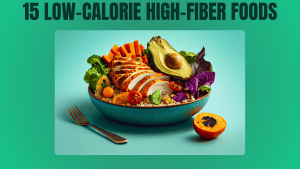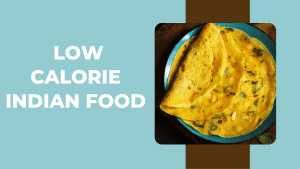Healthier digestive health means a healthier you!
The human digestive system, digestive health, or gut health consists of the gastrointestinal tract plus the accessory organs of digestion (the tongue, salivary glands, pancreas, liver, and gallbladder). Digestion implies the breakdown of food into smaller and smaller components until they can be absorbed and assimilated into the body.
The process of Digestion has three stages.

-
Breakdown of Food
The initial stage is the cephalic phase of digestion which starts with gastric secretions in response to the sight and smell of food. This stage incorporates the mechanical breakdown of food by chewing, and the chemical breakdown by digestive enzymes, that takes place in the mouth.
-
Digestion in the oral cavity and stomach
Saliva consists of digestive enzymes called amylase, and lingual lipase, secreted by the salivary glands and serous glands on the tongue. The enzymes begin to break down the food in the mouth. Chewing, in which the food is combined with saliva, begins the mechanical process of digestion. This produces a bolus that can be swallowed down the esophagus to enter the stomach. The gastric phase of digestion in the stomach. The food is further broken down by combining with gastric acid until it passes into the duodenum. Next, in the third intestinal phase of digestion, where it is mixed with a number of enzymes produced by the pancreas. Digestion is managed by the chewing of food carried out by the muscles of mastication, the tongue, and the teeth. Gastric acid, and the production of mucus in the stomach, are vital for the continuation of digestion.
-
Digestion in Intestine
Peristalsis is the rhythmic contraction of muscles. It begins in the esophagus and continues along the wall of the stomach and the rest of the gastrointestinal tract. This first results in the production of chyme which when fully broken down in the small intestine is absorbed as chyle into the lymphatic system. Most of the digestion of food happens in the small intestine. Water and some minerals are assimilated back into the blood in the colon of the large intestine. The waste products of digestion are excreted from the anus via the rectum.
To Keep A Good Digestive Health-
-
Reduce and manage stress
This implies taking a few minutes for meditation, a relaxation exercise, or time for yourself each day. Avoiding comfort foods.
-
Eat well
Feed your body for being healthy. In common, a healthy diet is one that’s rich in fiber, moderate in protein, and low in fat, with minimal processed foods or toxins. Staying hydrated with water, or low-sugar juices, green tea, and eating enough fiber, which not only keeps the gastrointestinal tract moving but also nourishes and energizes the cells of the colon. Reduce the intake of processed and red meats as well as substances high in sugar, caffeine, or alcohol.
-
Maintain healthy body weight.
Obesity increases the risk for many diseases, including gastric, colon, esophageal, pancreatic, and other cancers. It also increases the risk of metabolic syndrome, diabetes, fatty liver disease, and other diseases. If you’re overweight, consult your doctor about a weight loss program that is right for you.
-
Stay active.
Maintaining physical health is important to a healthy gastrointestinal tract, body, and mind. A walk post meals can help to curb constipation and bloating. In addition, exercise can help reduce the risk of colon cancer.
-
Avoid tobacco.
Smoking raises your risk of colon cancer and a number of other cancers and diseases. If you use tobacco, consult your doctor about a program to help you quit.
Foods to Avoid for Good Digestion
-
Fried foods
Fried foods are high in fat and can lead to diarrhea. Fatty cuts of meat, rich sauces, and buttery or creamy desserts can cause problems, too. Choose baked or roasted foods and light sauces that feature vegetables instead of butter or cream.
-
Citrus foods
Due to high fiber content, they can give some folks an upset stomach. Go easy on oranges, grapes, and other citrus fruits if your belly doesn’t feel right.
-
Artificial sugar
Chewing too much-chewing gum made with sorbitol can lead to cramps and diarrhea. Foods prepared with this artificial sweetener can cause the same problems.
-
Fructose
Foods sweetened with fructose including candy, fruit juice, sodas, and pastries are hard for some people to digest. That can lead to diarrhea, bloating, and cramps.
-
Too much fiber-
Foods high in fiber, like whole grains and vegetables, are good for digestion. But if you start eating plenty of them, your digestive system may have trouble adjusting. It results in gas and bloating. So step up the quantity of fiber you eat gradually.

-
Spicy foods
Some people get indigestion or heartburn after eating them, especially when it’s a large meal. Spices like red chili peppers might be a problem.
-
Dairy products
If some people suffer from diarrhea, bloating, and gas from having milk or milk products, they may be “lactose intolerant.” It means you don’t have an enzyme that digests sugar in milk and another product of dairy. Avoid dairy products if you’re lactose intolerant.
-
Alcohol
Too much consumption of alcohol may affect your digestive health.
-
Refined carbs
like white bread, and processed foods should be avoided.
-
Caffeine
High Consumption of caffeine drinks like coffee may result in insomnia, bloating, etc.
Keto For Good Digestive Health
The ketogenic diet has gained a popular following in recent years. It is a way to aid weight loss, improve blood sugar and lipids, and promote brain health. But its impact on gut health may very well lie in the diet quality and how this compares to the previous diet and lifestyle of the person. A well-planned ketogenic diet rich in whole foods high in fiber, healthy fats, fruits, and vegetables while avoiding processed foods can improve your gut health. If you’re on a keto diet and want to give your gut a boost, consider adding some keto foods for a healthier gut.
What is Keto?
Keto refers to a low-carb, high-fat, and moderate-protein diet that puts the body in ketosis. Ketosis is a metabolic state contrasting from your body’s usual state of burning glucose to make energy. In the state of ketosis, your liver is metabolizing fat to make ketones, which then serve as alternative fuels to glucose. The Keto diet essentially turns the food pyramid upside down and contradicts everything normally associated with healthy eating.
Macronutrients Distribution on Keto-
- 5-10% calories from carbohydrates
- 20-25% calories from protein
- 70-80% calories from fat
A plate with one sliced avocado, two dollops of sour cream, some cucumbers on the side, halloumi cheese fried in butter, drizzled with some olive oil and walnuts is an example of a meal with the above keto ratio.
Keto-friendly foods good for digestion

-
Avocados-
Avocado is a major keto diet staple. This renowned fruit is high in fat, low in digestible carbohydrates, high in fiber, and dense in essential nutrients. One whole avocado constitutes 3g of fiber, which is 54% of the daily value for this nutrient. Avocados are also rich in monounsaturated fatty acids (MUFAs), for which studies show support for gut microbiota balance.
-
Nuts
Nuts and seeds are rich in fiber and MUFAs. However, fat and fiber content can vary significantly among different nuts and seeds. A handful of walnuts, for example, contains 1.9g of fiber and over 2.500 mg of omega-3 fatty acids. The same serving of pistachio nuts contains 3g of fiber and only 73mg of omega-3s.
-
-
Cruciferous veggies
Most cruciferous vegetables are low carbs, which is why they’re recommended on keto. Examples of cruciferous vegetables include broccoli, cauliflower, capsicum, Brussel sprouts, bok choy, kale, and cabbage. Learnings on cruciferous veggies found they contain antioxidant compounds that support gut lining health and immunity.
-
Butter
Butter is a natural source of butyric acid, a short-chain fatty acid that gut bacteria make and that provides energy for cells in the gut lining. You can also have cheddar cheese, parmesan cheese, goat’s cheese, and ghee on a keto diet.
-
Coconut-
Another digestion-friendly fat to include in your keto diet is coconut oil. Coconut oil has special effects on overall health, but especially on the gut microbiome. A study in mice published recently found that virgin coconut oil increased the abundance of probiotic bacteria. Coconut oil also has antifungal properties.
-
Berries-
Blueberries, strawberries, and raspberries are the fruits you can have on keto. Berries can help boost your daily fiber intake. However, berries also contain phenolic compounds that studies found to inhibit the growth of bad gut bacteria while increasing good bacteria.
-
Kimchi
This primary Korean dish is made from vegetables like cabbage that have undergone fermentation. This boosts their content of beneficial bacteria to support gut health
Benefits of Keto Foods On Your Gut Health –
- Keto Protects gut lining– Keto helps to protect your gut lining by reducing the inflammation in your body.
- Keto reduces colon cancer risks-Keto can reduce colon cancer risks. Studies found these low-carb diets, especially when enriched with omega-3 fatty acids, suppressed colon cancer growth.
- Keto eliminates refined carbs and processed food-Overgrowth of bad gut bacteria and reduction in microbiota diversity are common with Western-style diets. Keto discards refined carbs and processed food, which helps kill off bad bacteria and boost microbiota diversity.
Myths about Keto Affecting your Digestive Health
Because Fat is considered harmful to gut health and because keto is a high-fat diet, many people think that switching to this diet will have a negative impact on gut health. But this is simply not true. Keto helps in reducing inflammation and oxidative stress, and this definitely shows gut health. When followed in the right way, keto has done wonders for people. It helps in weight loss and improves overall health.
-
Gut-friendly Foods-
You can include gut-friendly keto foods in your diet to support your gut health. Focus on eating healthy fats like olive oil, coconut oil, avocados, and fatty fish.
- Make sure you take your macronutrients properly while following the diet. Use a keto calculator to track your macronutrients.
-
Constipation and diarrhea
These are other issues that people face due to a lack of fiber and nutrients in their diet. In addition, this low fiber intake can also slow weight loss and contribute to bloating, cramps, and gas. Well, It’s totally possible to get ample fiber on keto. Add more fiber-rich foods to your diet.
- Stay Hydrated-Whether you’re keto or not, fail to drink enough water throughout the day and you’ll probably end up constipated.b Staying hydrated helps stimulate digestion, keeping things moving, and warding off digestive issues. If you don’t like plain water, you can have lemon water or herbal tea on a keto diet.
-
Inadequate Physical Activity-
What you drink and eat aren’t the only causes of keto constipation. “Inadequate physical inactivity can also contribute. Often, when people experience tiredness linked with keto flu during the initial few weeks on the diet. Rolling back on exercise can help reduce stress on the body as it transitions into ketosis. However, that doesn’t imply a keto diet accounts for a sedentary lifestyle. Staying active can boost the passage of food through the intestines. So if you want to truly feel your best on keto, you’ve got to get moving. We recommend at least 20 to 40 minutes of lower-intensity exercise (like walking, jogging, or cycling) to promote regularity.
To sum up, following a healthy, balanced diet rich in whole foods is the easiest and most effective way to optimize digestive health on the ketogenic diet. Whether you are on keto or not, there are clearly huge benefits to shifting your dietary balance more in favor of fats and proteins and less in favor of carbs from grains and legumes, so it’s well worth giving this style of eating a try. Your microbes related to omega fatty acids also will certainly thank you for it, and you might be surprised by how you feel after a few weeks of giving your gut the kind of nutrition and support it needs to truly thrive.











